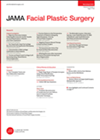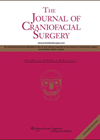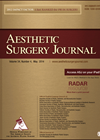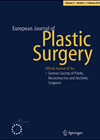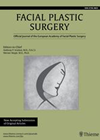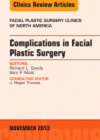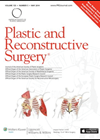
Journal Reviews
Three-dimensional imaging of the supratip after lower lateral cartilage repositioning
Cephalically positioned lower lateral cartilages (LLCs) contribute to the bulbous-appearing nasal tip. Repositioning of the LLCs removes volume created in the nasal sidewall / supratip regions leading to better tip refinement. This reshaping of the tip is ameliorated by application...
Repair of the supernumerary nostril
The supernumerary nostril is a rare challenge, first reported by Lindsay in 1906. It has been suggested that they may develop from an accessory nasal pit or from a fissure in the lateral nasal process to create a double nostril....
Lateral crura-alar ring
Lateral crura incision or excision are common procedures for most rhinoplasty surgeons despite the fact that they have potential complications such as nostril rim retraction, bossa tip formation and alar wall collapse during breathing. Fortunately, nowadays there is a trend...
How to measure functional outcome after nose surgery
The authors of this paper perform a systematic review of the literature on two of the most popular patient-reported measures for nasal obstruction, the Nasal Obstruction Symptom Evaluation (NOSE) and the visual analog scale (VAS). They compare pre and postoperative...
Correcting lower lateral cartilage absence
Congenital absence of the lower lateral nasal cartilage is rare. The authors discuss correcting the absence using an open approach technique to harvest septal cartilage. This is then fashioned into a shield graft and a supporting strut graft to define...
Polydioxanone in septal reconstruction
Septal reconstruction is a challenging problem and is undertaken for functional or cosmetic reasons or a combination of both. Either autologous cartilage, commonly auricular, or other alloplastic material can be used. The authors describe the use of a polydioxanone (PDS)...
Total nasal tip reconstruction with autologous auricular cartilage
This paper shows an original and effective procedure for total nasal tip framework reconstruction using autologous auricular cartilage. The authors explain how the seagull-wings technique, described some years ago by one of them (Fernando Pedroza) to treat severe nasal tip...
Long-term complication after nasal dorsum augmentation
This is a case report describing a 54-year-old man who had had a rhinoplasty 10 years earlier and was unaware that he had had a porous polyethylene dorsal nasal implant inserted. He presented with a small pustule in the lower...
Complications of rhinoplasty
Whilst rhinoplasty is one of the more common procedures performed by facial and general plastic surgeons, it is associated with a wide range of complications. Complications increase with the complexity of the surgery and in particular when there are both...
Alar retraction – background and handling
The authors present a comprehensive analysis of alar retraction malformation in rhinoplasty patients. For this retrospective review they analysed 45 patients with alar-columellar disproportion. Various aetiologies were identified. Treatment of these has to be determined on an individual case-to-case basis....
Diced cartilage grafts in rhinoplasty
This article reviews the author’s current techniques and applications of diced cartilage grafts (DCG) in rhinoplasty surgery. Dr Daniel is a renowned rhinoplasty surgeon and he describes the technique that he has been using for more than 30 years. In...
Management of alar retraction
This paper shows the results of a retrospective study on aetiology and treatment of one of the most common issues in rhinoplasty, alar retraction as defined by Jack Gunter’s classification system. The study was made using pre- and postoperative photographs...

